How to fight inflation?
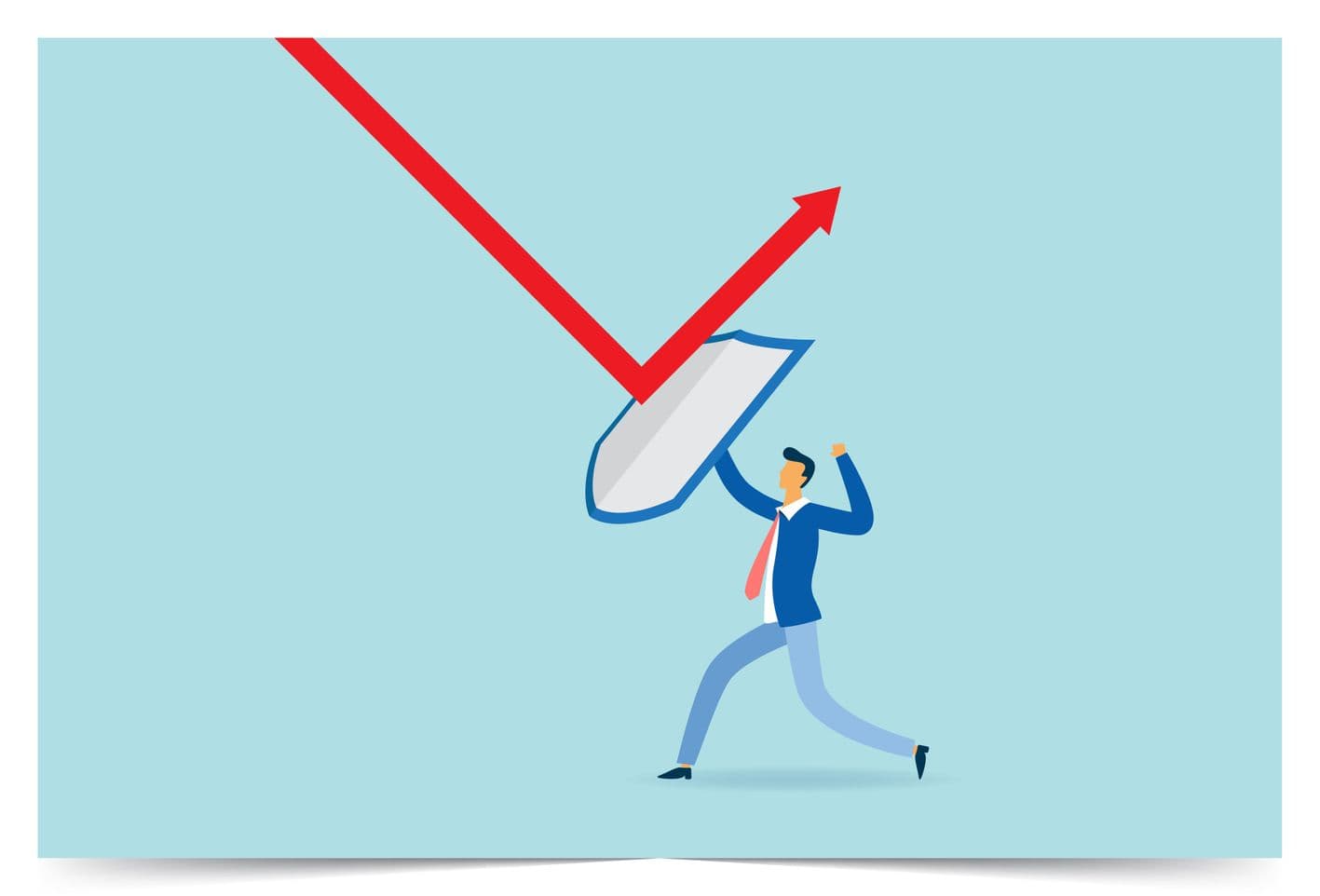
With inflation moving down at a slow pace and the possibility of stagnation looming in the U.K., let’s explore some practical tips on how you can protect against inflation.
Although inflation rates have begun to go down, we’re still facing a living crisis in the U.K. Core inflation in the U.K. remains at its highest level in three decades. Meanwhile, in the U.S., inflation remains above the target level of 2%, resulting in persistently high prices.
And did you know that even a slowdown in inflation can significantly impact your savings?😲
It's true! That's why we’re here, ready to provide you with some practical tips to navigate these challenging times.
We’ll cover some tips and tricks and explain why placing part of your hard-earned savings into precious metals can be a good option during the economic downturn.😌
But before we dive into this, let's first take a closer look at the current inflation situation in the U.S. and the U.K. to provide you with a broader understanding.
Inflation in a global context: the situation in the United States and the United Kingdom
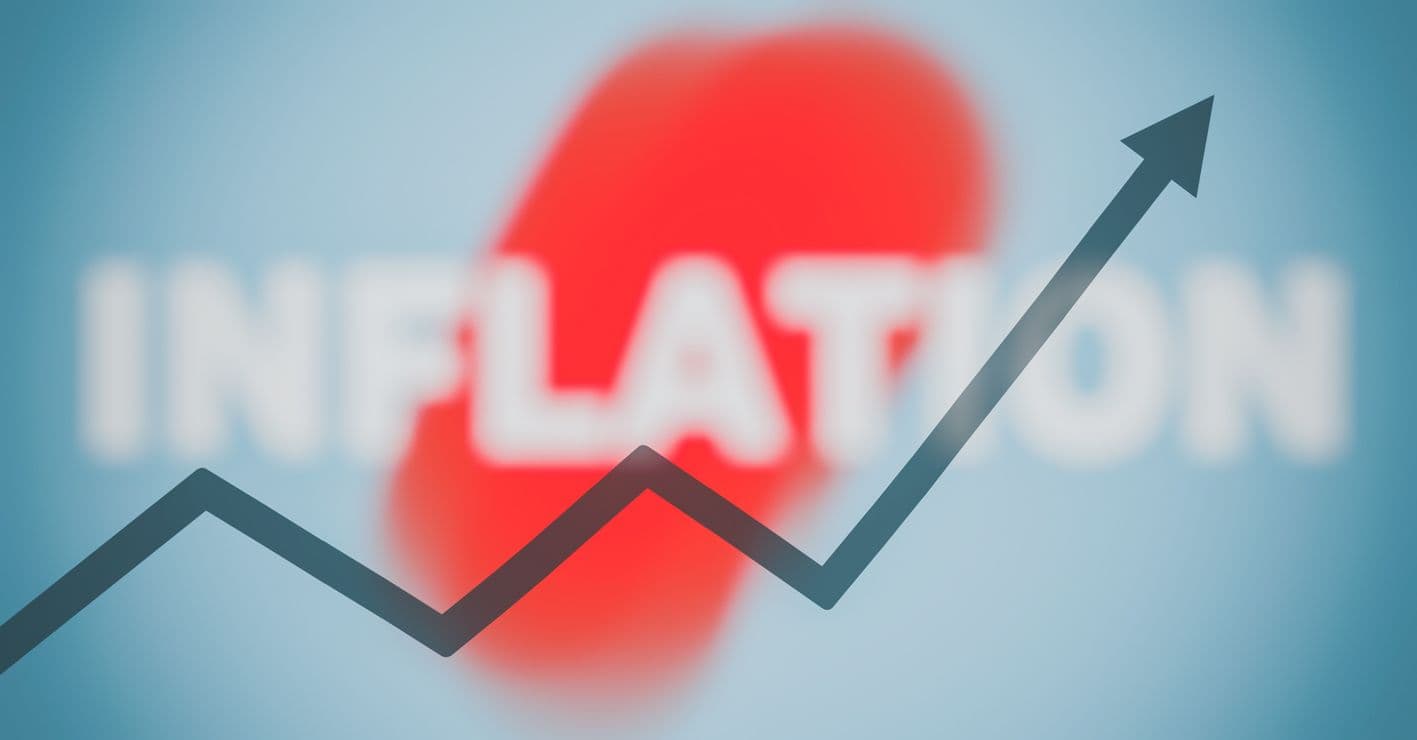
Inflation in the United States
The good news is that the inflation rate in the U.S. has been coming down ever since it reached a 40-year high in June 2022.
To combat those high numbers, the Federal Reserve began raising interest rates, and we can now see that inflation has been falling down for 12 months in a row.
But prices still remain high in places like housing and the grocery sector. The Federal Reserve may continue to raise interest rates to keep inflation in check.
And despite the rate hikes, the job market has been doing well, with more people finding jobs and wages going up. So while inflation came in at 3% in June this year, it’s still not at the target of 2%, with prices remaining high.
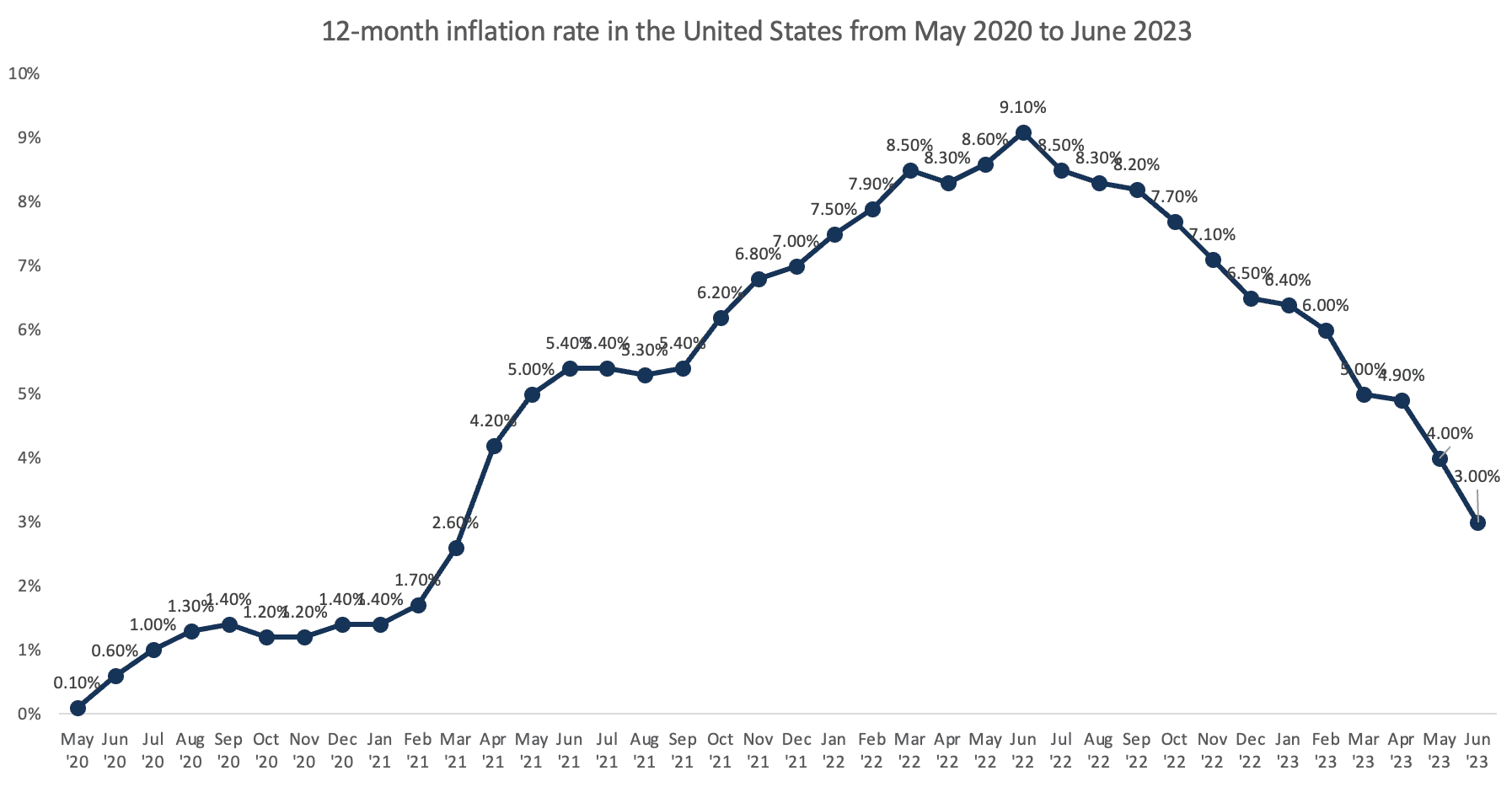
Inflation in the United Kingdom
Things are looking bleaker in the U.K.😳
Recent data from the Bank of England indicates that households withdrew a staggering £4.6 billion from saving accounts in May.💸
This is the highest amount of withdrawals ever recorded since October 1997. It suggests some people use their savings to maintain their standard of living or pay off debts.
And the House of Commons reported U.K.'s inflation was the highest at 8.7% out of other economies, such as Italy, Germany, France, Spain, the Eurozone as a whole, and the U.S.
To help combat such high inflation rates, the Bank of England raised interest rates to help reduce consumer spending and borrowing.
And when interest rates rise, borrowing money becomes more costly, making it harder for people to pay off existing debts or access affordable credit.
As a result, homeowners may need to refinance mortgages or loans to reduce their monthly payments, access lower interest rates, or adjust their loan terms to better align with their financial situation.
Refinancing can help people better manage their debt and avoid missing loan payments, providing them with some financial relief during challenging economic times.
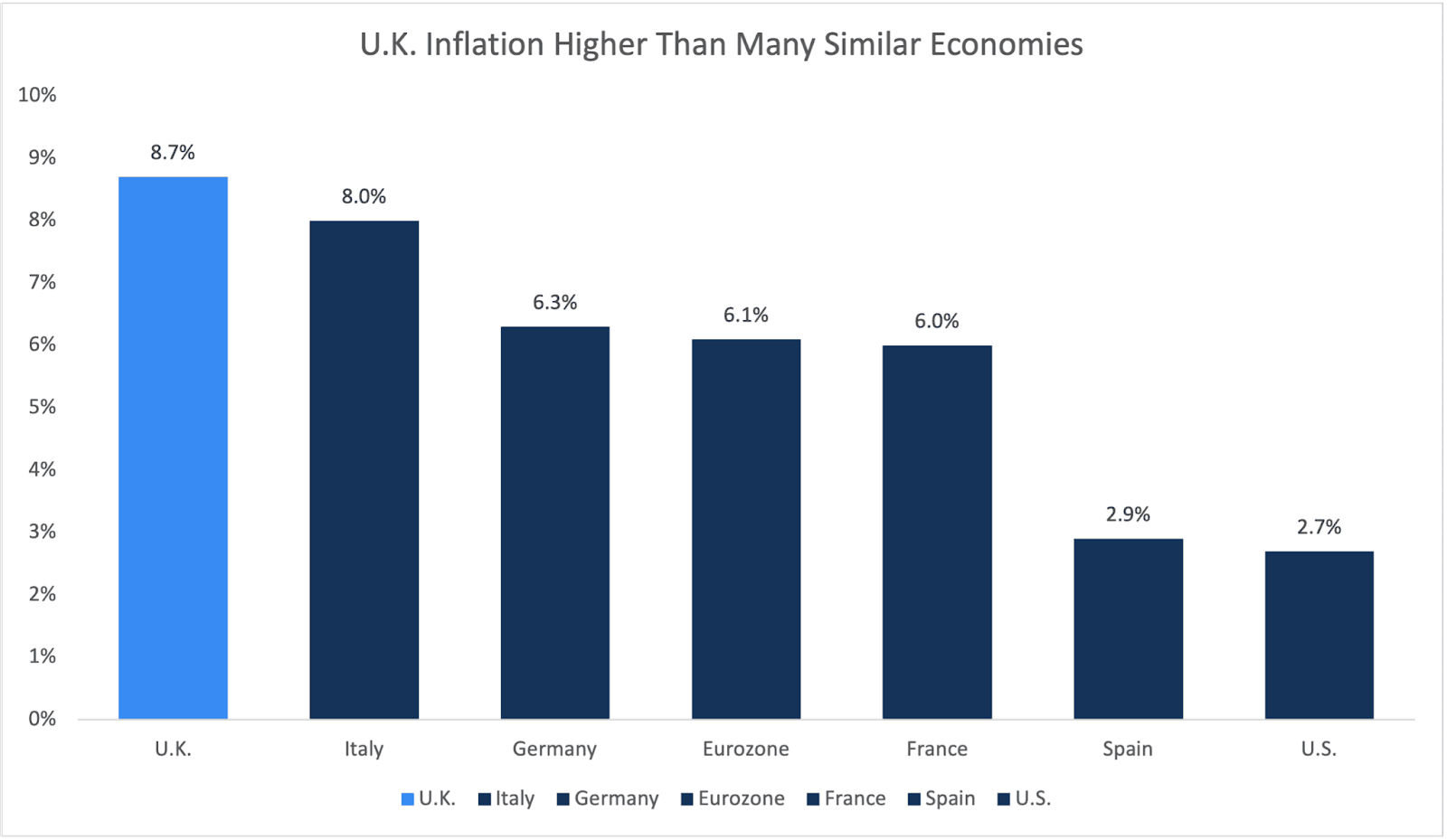
Inflation, deflation, stagflation: what can we expect in 2023?

U.K. growth forecast
The U.K. economy is expected to steer clear of a technical recession but, instead, head into stagflation.📈
💡What is stagflation?
Stagflation happens when prices keep rising, making things more expensive, while many people struggle to find jobs. As a result, people have less money to spend, and businesses don't grow much and sometimes even shrink, leading to more job cuts. It's a tough situation where prices and unemployment go up, and the economy doesn't grow much or might even decline.
During this challenging economic scenario, people’s savings might not stretch as far as they did before inflation set in. With rising prices, the real value of savings may diminish over time. Therefore, it’s important for individuals to seek out effective ways to protect their wealth. This could involve considering investments that tend to perform better during economic hardship and diversifying savings portfolios.
According to Schroders, a leading multinational asset management firm, they anticipate the U.K. will experience a period of slow growth for most of this year.
This means that the economy won't grow much during this time. However, there is some hope for improvement in 2024, as they predict a modest expansion of 0.9%, indicating a positive sign of economic growth after a period of slow growth.
Over in the U.S.: recession delayed, but challenges lie ahead💪
The U.S. economy has been performing better than expected, driven by a strong job market and increased consumer spending.
Despite this growth, rising interest rates at 5.25% may lead to higher borrowing costs and reduced disposable income, impacting economic expansion.
But, it's predicted that a decrease in inflation will allow the Federal Reserve to lower interest rates by 25 basis points, supporting the economy's recovery. However, GDP growth is expected to remain stagnant in 2024.
If this slowdown happens, the World Gold Council predicts that: “gold will remain supported in 2023, especially given its robust performance in [the first half of the year]. But it may not break out significantly from the range we have seen so far this year.”
With predictions of slow economic growth in the U.K. and the U.S., let’s uncover what actions we can take to protect our wealth.
Here are a few tips.
How to combat inflation at your level?
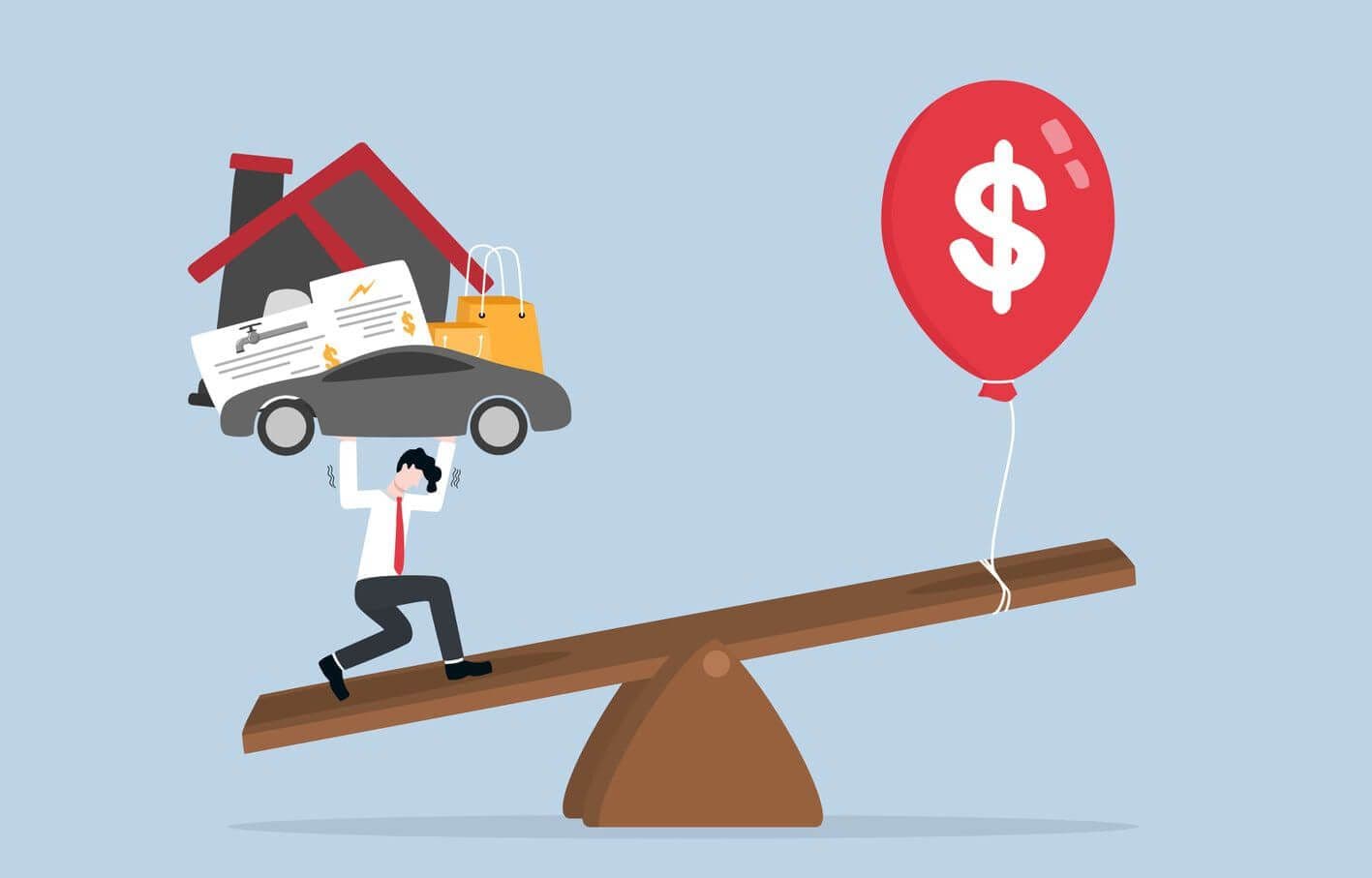
Here are 5 practical tips to reduce your spending and save money.
1. Cut down your spending on groceries🛒
Since the U.S. Department of Agriculture noted that grocery prices have increased, cutting down on your supermarket spending is a good idea.
Having a plan in place will help you save money:
- Have a food spending plan - Have a weekly or monthly budget to help you reduce unnecessary spending.
- Choose cost-effective foods - Building meal plans around cost-efficient foods like pasta, rice, or potatoes will help you cut costs.
- Have a meal plan in place - A meal plan will avoid impulse buying and take-out during the week.
2. Plan for more affordable vacations!🌴
While some experts predict that airfare prices for summer 2023 will be lower compared to last year’s peak, the cost of jet fuel is still quite high. On top of that, dining out and hotel rates have gone up, making this year’s vacation potentially pricier than before.
If possible, you might want to consider delaying big vacations for now.
Instead, you could explore attractions and activities in your local area. This approach can save you significant money in the short term, making it easier to embark on your dream vacation later. ✈️
3. Evaluate your expenses📉
Reviewing your budget as your circumstances change is always a good idea. And with the rising living costs, it might be a good idea to revisit your budget and see where you can save instead of spending.
You might be able to cut back in the following areas:
- Gym membership that you no longer use 🏋️♂️
- Subscriptions you might have forgotten about 📺
- Choose to dine in instead of out 🍽️
4. Tackle your credit card debts
Since everything is quite expensive, it's probably best to avoid taking on any more debt. Since the Federal Reserve increases inflation rates to combat inflation, it will be even costlier and harder to pay off the new debt.
Instead, focus on paying off any existing credit card debt. The debt snowball method can be a great way to tackle your debt.
The debt snowball strategy is paying off the smallest debt first and then using the freed-up money to tackle the next smallest debt, creating a "snowball" effect for debt repayment. It aims to build motivation and gradually eliminate larger debts.
5. Shield your wealth from inflation
While many saving methods can’t keep up with inflation, there are ways to preserve your wealth.
Consider the following to hedge against inflation:
- Treasury I bonds are a great choice because they're safe, government-backed, and match the inflation rate. But they're not great for short-term savings plans since you'll have to place your money for at least five years, facing charges if you take out the money early.
- If you have savings that you plan to use in the near future (short-term savings), you may want to consider putting that money in a high-yield savings account. These accounts offer higher interest rates than regular savings accounts, making them a suitable option for those who want to grow their savings while not actively using them.
- Placing your wealth in precious metals is another great way to protect against inflation. Let’s go in more detail.
Gold, a favored choice to hedge against inflation inflation

As we’ve seen, the U.K. might be heading into stagflation, while the U.S. economy is predicted to stagnate in 2024.
In times of stagflation, gold may be a popular alternative for investors. Stagflation creates economic uncertainty because it disrupts the usual connection between inflation and unemployment. It presents a situation where both inflation and unemployment are high at the same time.
And from what we’ve seen historically, gold has tended to perform well during uncertain economic times.
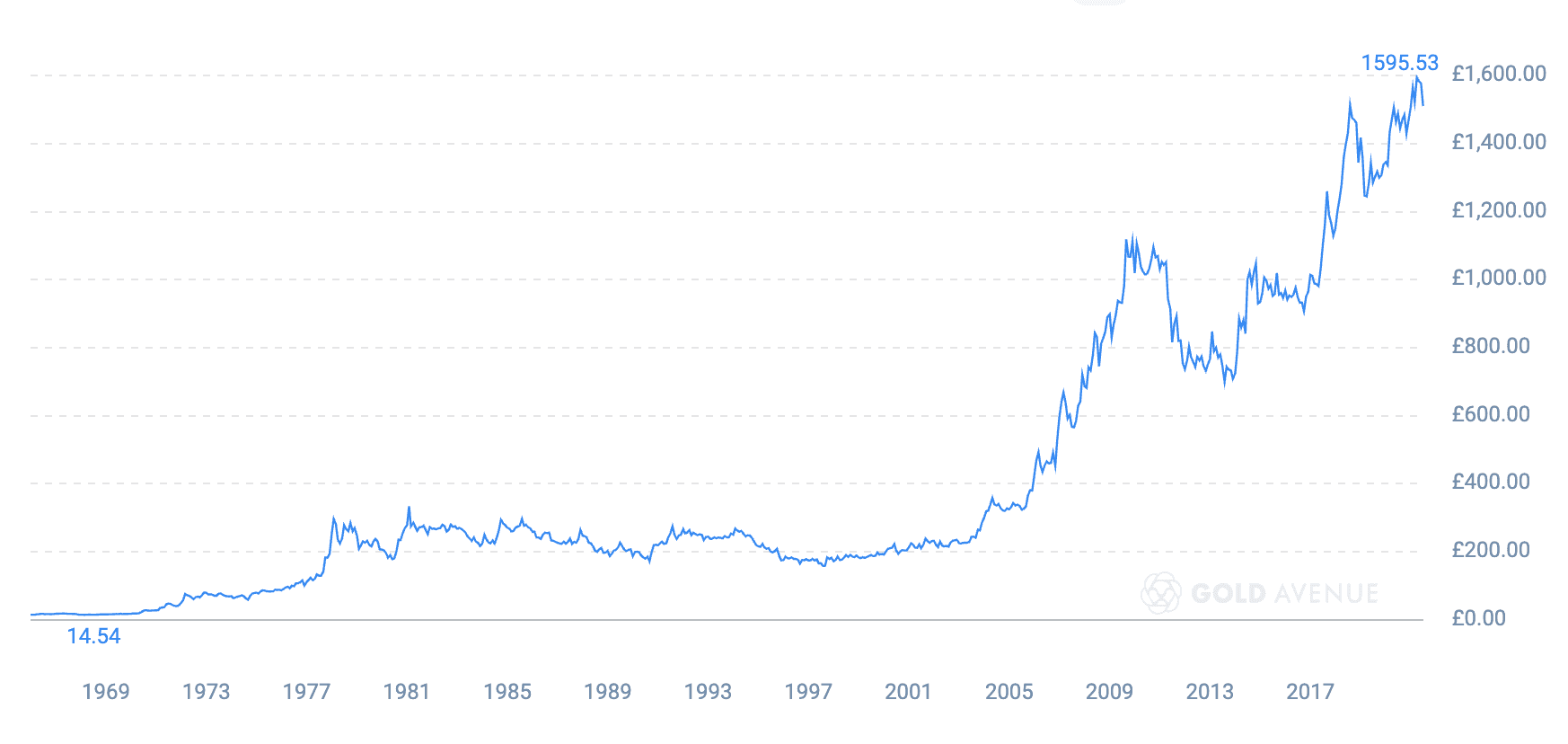
If you’re thinking about whether to buy gold or not, it may be a good choice in today’s economy since it can protect and diversify your savings.
And although investing in gold may not allow for immediate profitability, it has some advantages:
- Protects from inflation (because the gold price tends to increase in times of inflation)
- Helps you gain freedom from the banking system (that’s if you choose to store it with us 😉)
- Limits the risk of losses from market volatility, especially since thegold price forecast for the coming months seems to be quite positive
- Inversely correlated to the stock market, meaning that gold prices tend to move in a different direction from stocks
After reading about these benefits, you might still be unsure and think that gold investment is reserved for the wealthy, but this is not entirely true. If you’re a beginner investor, you can start with a smaller budget first and then build your savings portfolio.
Key takeaways
- The U.K. may experience stagflation, which is a tough economic situation where both prices and unemployment rise.
- The U.S. economy is performing better than expected, but rising interest rates may impact economic growth, and GDP growth is expected to remain stagnant in 2024.
- Some practical tips to combat inflation include: cutting down grocery spending, planning affordable vacations, and reviewing expenses.
- Gold can be a good investment option to hedge against inflation, and investors may turn to gold during stagflation. It also provides investors with diversification.